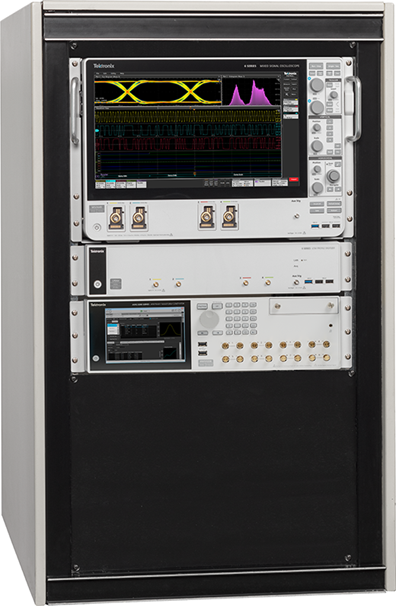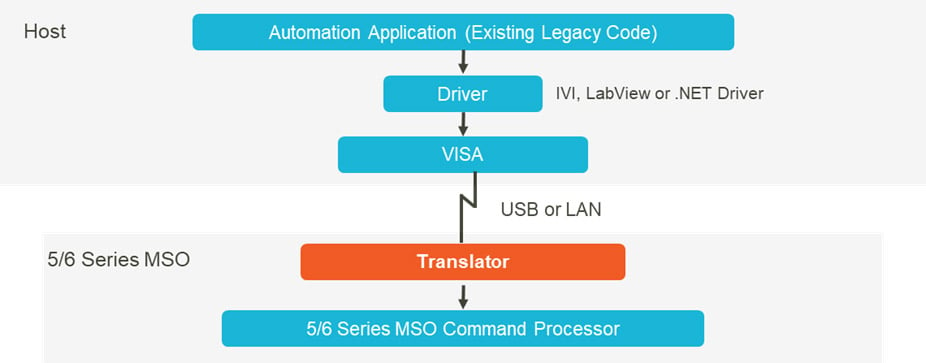

Automated test systems can live a long time. I often work with engineers who are supporting test systems that were designed and built a decade or more earlier. In many cases, the engineer wasn’t even part of the development of the system. As a test and measurement manufacturer, at some point, instruments become too expensive or even impossible to build – usually due to scarcity of parts. And since our engineers are always working to advance our technology, test engineers naturally want to replace older instruments with newer ones. Yet, retrofitting new instruments into existing test systems can be challenging. A new Programming Interface Translator built into our 5 and 6 Series MSOs oscilloscopes can help.
Any automated test system implementation requires knowledge of the unique capabilities and commands associated with the instrumentation in the system. Many test equipment vendors follow the conventions of Standard Commands for Programmable Instruments (SCPI or “skippy”), yet most instruments have a unique command set that reflects their distinct character. Writing the code that utilizes these commands takes time and expertise of its own. Once an automation scheme is developed, it is often used for years. But what happens when an instrument becomes obsolete, or the performance requirements of a test change, necessitating an upgrade? Returning to old code can be time-consuming and expensive. This can be compounded if the person who wrote that code is no longer with the company, or if a script uses an extremely old programming language. In some cases, like when the automation is contained in a compiled application and the source code is no longer available, it may be impossible to update.

Figure 1. A customizable text file is used to translate commands developed for older scopes into commands for the 5 and 6 Series MSOs.
Tektronix has provided a tool to help ease the pain of upgrading or migrating to new instruments, the PI Translator. This service runs on all 5 Series and 6 Series MSOs, MSO58LPs, and LPD64s, and is included for free in the base scope firmware. It allows new instruments to be dropped into existing automation systems by translating legacy commands as they are received. Many commands from legacy MSO/DPO5000/7000 are already supported by the tool. However, there are many functions in those scopes that are not directly replicated on the new platform. The PI Translator is customizable, allowing implementers to add support for any existing or arbitrary SCPI command.
This customization scheme gives the PI Translator powerful flexibility. Legacy commands can be mapped to a sequence of modern commands, translations can vary depending on the provided argument, and even arbitrary commands from outside the MSO/DPO5000/7000 Programmer’s Manual. However, adding new functionality is very straightforward. The list of commands and translations is contained in an XML (formatted text) file that can be edited with any text editor or IDE. A large set of existing legacy commands are already implemented, and further guidance and examples can be found in the PI Translator Technical Brief, while the full documentation is contained in the PI Translator Customization Manual.


